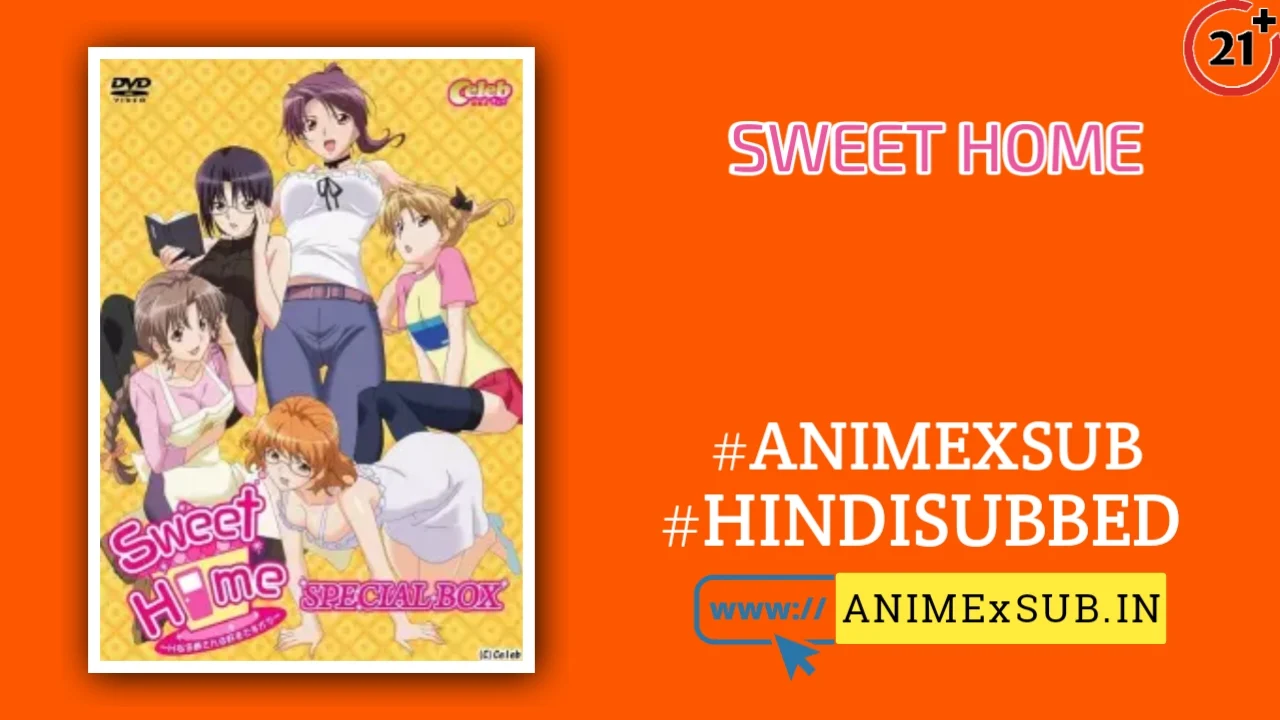
Sweet Home: H na Oneesan wa Suki desu ka? Hindi Subbed [3/3] {Uncensored}

Sweet Home: H na Onee-san wa Suki Desu ka?
Synopsis
Ryuichi is a university student. He used to live alone and enjoyed his school life. But one day, his apartment was destroyed by a fire.... He reluctantly comes back to his house. But his house has been changed to a boarding house for girls...! It seems there is no place for him to live. But they all allow him to stay there together! His new life begins like this.... (Source: Himeya Shop)
Characters
Sweet Home: H na Oneesan wa Suki Desu ka? – A Deep Dive into a Polarizing Hentai Classic
Sweet Home: H na Oneesan wa Suki Desu ka? (2010-2011), a three-episode hentai anime, stands as a curious artifact in the harem genre, blending domestic slice-of-life elements with explicit adult content. Adapted from a visual novel, it follows Ryuichi, a university student whose apartment burns down, forcing him to return to his family home—now a boarding house filled with vibrant, older women. What unfolds is a mix of titillating scenarios and character-driven drama that attempts to elevate the genre but often stumbles under its own ambitions. This review explores the series’ strengths, flaws, and unique place in hentai culture, avoiding promotional fluff to deliver a critical, no-nonsense analysis.
A Premise Rooted in Fantasy and Tension
The setup is quintessentially harem: Ryuichi, a relatable everyman, finds himself surrounded by a cast of women—each with distinct archetypes—vying for his affection in a shared living space. The boarding house, run by the maternal yet alluring Kyoko, houses characters like the bold and confident Chinatsu, the tsundere Risa, and others who fit familiar molds (the shy girl, the seductress, etc.). The premise thrives on the fantasy of a young man navigating a space brimming with romantic and sexual possibilities, a dynamic that’s both the series’ biggest draw and its Achilles’ heel.
Unlike many hentai that prioritize physicality over plot, Sweet Home attempts to weave a narrative thread. Ryuichi’s displacement from his independent life and return to a transformed home creates an undercurrent of personal stakes—his struggle to find his place among these women mirrors his broader search for stability. This attempt at emotional depth sets it apart from purely gratuitous works, but the execution often falters, as the story oscillates between heartfelt moments and obligatory adult scenes.
Visuals and Animation: A Mixed Bag
For its time, Sweet Home boasts decent production values. The animation, handled by Studio Eromatick, features vibrant character designs with a focus on exaggerated physicality—a hallmark of the genre. Chinatsu’s bold purple hair and expressive features make her a standout, as noted by reviewers for her memorable design. The boarding house itself is rendered with enough detail to feel lived-in, grounding the fantastical premise in a cozy, almost nostalgic aesthetic.
However, the animation quality dips during explicit scenes, where shortcuts like static frames and repetitive movements become noticeable. While the art direction shines in character interactions and quieter moments, the adult content often feels like an afterthought, lacking the fluidity or creativity seen in higher-budget contemporaries like Bible Black or Aki-Sora. This inconsistency undermines the series’ attempt to balance plot and eroticism, leaving viewers with a senseம
Character Dynamics: Hits and Misses
The strength of Sweet Home lies in its characters, particularly the women who populate the boarding house. Chinatsu, with her confident demeanor and playful nickname for Ryuichi (“Shonen”), steals the show with a personality that feels genuinely engaging. Kyoko, the surrogate mother figure, adds a layer of emotional complexity, her design striking a balance between nurturing and seductive. However, other characters, like Risa, fall flat. Her tsundere archetype feels underdeveloped, and the remaining cast often blends into the background, their personalities overshadowed by the genre’s demand for variety over depth.
Ryuichi himself is a serviceable protagonist—neither overly bland nor particularly compelling. His interactions with the women range from genuinely sweet to formulaic, with the script occasionally leaning too heavily on harem tropes (e.g., accidental walk-ins or misunderstandings leading to spicy moments). The show’s attempt to build meaningful relationships is commendable, but the limited three-episode runtime means these bonds rarely move beyond surface-level archetypes.
Themes and Subtext: More Than Meets the Eye?
Sweet Home flirts with deeper themes, particularly around the idea of “home” as a place of belonging. Ryuichi’s return to a changed household reflects a universal anxiety about losing one’s roots and adapting to new dynamics. The women, each with their own quirks and backstories, represent different facets of connection—friendship, romance, and familial warmth. However, these themes are undercut by the genre’s need to prioritize adult content over character development. The explicit scenes, while competently executed, often feel like narrative interruptions rather than organic extensions of the story.
One unique aspect is the series’ subtle nod to power dynamics. Chinatsu’s boldness and Kyoko’s authority contrast with Ryuichi’s relative passivity, creating moments where the women drive the narrative—an inversion of typical harem power structures. Yet, this is never fully explored, as the series defaults to safer, crowd-pleasing territory.
Reception and Legacy
Reviews of Sweet Home are mixed, reflecting its ambitious but flawed execution. On MyAnimeList, it scores a modest 7/10, with fans praising its art and select characters (Chinatsu and Kyoko often get shoutouts) but criticizing the forgettable cast and rushed pacing. The harem genre’s reliance on a large ensemble hurts here—three episodes aren’t enough to flesh out five women plus Ryuichi, leaving some characters as little more than eye candy. Compared to other hentai of the era, Sweet Home stands out for its attempt at a cohesive story but lacks the emotional weight of Aki-Sora or the psychological edge of Euphoria.
Cultural Context and Impact
Released during a boom in harem hentai, Sweet Home reflects the early 2010s trend of blending explicit content with light narrative ambition. Its boarding house setting and focus on older women tap into a specific fantasy—less about taboo (despite some incest-adjacent undertones) and more about domestic comfort laced with desire. It’s a product of its time, catering to an audience craving escapism in a structured yet risqué format. Streaming platforms like hanime.tv and hentaimama.io have kept it accessible, with high-quality rips (720p/1080p) ensuring its visuals hold up.
However, Sweet Home doesn’t push boundaries like its horror namesake, the Korean webtoon and Netflix series Sweet Home, which uses a similar “trapped together” premise for apocalyptic dread. The hentai’s lighter tone and focus on romance over existential stakes make it a more straightforward, less provocative experience.
Final Verdict
Sweet Home: H na Oneesan wa Suki Desu ka? is a fascinating but flawed entry in the harem hentai canon. Its attempt to blend a heartfelt story with adult content is admirable, and characters like Chinatsu and Kyoko leave a lasting impression. However, a rushed narrative, uneven animation, and an overreliance on genre tropes keep it from reaching greatness. It’s a solid 7/10—enjoyable for fans of the genre but not a game-changer. For those seeking a mix of cozy domesticity and spicier fare, it’s worth a watch, but don’t expect it to linger in your mind long after the credits roll.










